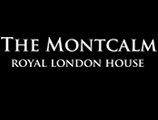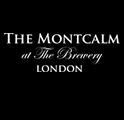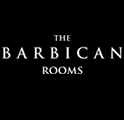The city of London is well known for its beautiful terrain and abundance of parks. With nature reserves and botanic gardens spread across over 1500 square kilometres, there’s plenty for guests at 5 star hotels near Barbican London to enjoy during their visit. Whether you’re here for business or to enjoy the landmarks and culture of the city, one of the best places to start are the city’s waterways.
London’s history is intertwined with that of the River Thames. Over hundreds of years, the city has developed around this beautiful river that spans all the way from the West of England into the East, carving a path all the way through some of the country’s most beautiful areas. Guests of the Brewery London City Hotel are well located to enjoy some of the waterside attractions of London, not least the sights and landmarks beside the River Thames itself.
But when it comes to looking further afield, the city portion of the river is just part of the fun. London is just one leg of a larger journey that you can take along the banks of this meandering river. Over 185 miles, the Thames Path is a great way to follow the river from its source in the Cotswolds area of England and through London to the Thames Barrier. Whilst it’s not expected of you to follow the entire Thames river in one sitting, there are plenty of attractions in London and outside that you can enjoy along different legs of the path. This blog will provide an overview of what guests at Montcalm At The Brewery can expect to see from the source of the river to the Thames Path’s entrance into London.
What Is The Thames Path?
The Thames Path is just part of the long and winding trail along the banks of the River Thames. Whilst it ends at the wide berth of the Thames Barrier on the eastern side of London, it begins as just a small stream in the Cotswolds area to the west. The Thames Path may end at the Thames Barrier, but the river itself continues on into the inlet at Southend On Sea and into the English Channel between Essex and Holland.
The Cotswolds
The Cotswolds are where the Thames originates. More specifically, a small meadow spring in a remote part of the nature reserve. Though the spring might be dry for much of the summer, you may see a trickle running through its bed and through Cotswolds many stone built villages. A great place to stop off and explore is the Cotswold Water Park, a series of over 100 lakes created from age-old quarrying.
Cricklade
The first prominent village you’ll reach on the first leg of the Thames Path is Cricklade, a village located on the crossing of the Ermin Roman Road and the River Thames. Dating back to Saxon times, this 9th century village was once the home of the mediaeval royal mint.
Church Of St John The Baptist
Built around 1205, the Church of St John The Baptist is located in the village of Inglesham in Swindon, and is located at a point where the River Thames, River Coln and Severn Canal cross. This beautiful church is famed for its renovation and preservation during the Victorian era, championed by future northeast Londoner and influential textiler William Morris. The church was known for its Anglo Saxon dated wall carvings, reformation era etchings and mediaeval paintings.
Lechlade
As you exit the Cotswolds on the Thames Path, you’ll pass Lechlade, a town famed for its toll bridge named Ha’penny Bridge. The lovely stone buildings of the village exemplify the beauty of this part of West England.
Chimney Meadows Nature Reserve
This 123 acre nature park located between Abingdon On Thames and Oxfordshire’s Faringdon follows the trail of the Thames and is made of six beautiful meadows, the plant and wildlife abundant in which is often studied by biologists. A perfect spot for a picnic then!
Oxford
The first major city on the Thames Path, this beautiful city is home to one of the oldest universities in Europe and has plenty of museums, art galleries and beautiful architecture to enjoy during a visit. Guests at hotels near Chiswell Street who want to visit the Thames Path area of Oxford without traversing the previous leg can reach the city via trains from Paddington Station in just an hour’s train ride.
Henley On Thames
With roots back in the 2nd century, Henley is another historic Roman era town that offers Thames Path walkers lavish and traditional English hospitality in the form of pubs, quaint architecture and rowing history. You can enjoy the River and Rowing Museum here, as well as the site of the Royal Regatta, an annual five day rowing race event that has its roots in the vIctorian era.
Marlow And Windsor Castle
Windsor Castle is one of the most prominent royal properties outside of London and lies on the banks of the Thames. A true castle in every sense of the word, Windsor Castle dates back to 1070 and was lived in by many monarchs, most extensively Prince ALbert and Queen Victoria.
Runnymede
Famous for being the first site at which the Magna Carta was signed, this peaceful meadow on the Thames in Surrey is 20 miles from Central London. Though the Magna Carta in this instance was ultimately unsuccessful as a peace treaty between King John of England and rebellious barons, the significance of it through the next few centuries was huge. This is part of the reason why the natural surroundings here have been preserved as such a beautiful section of the Thames Path.
Hampton Court Palace
Located at the edge of London in the borough of Richmond Upon Thames, Hampton Court Palace marks the entrance into the city and was originally built in the 15th century for Cardinal Wolsey. Guests at accommodation near Brewery Road can visit Hampton Court Palace and its adjacent section of the Thames Path via trains from Waterloo Station, which take just 50 minutes.































